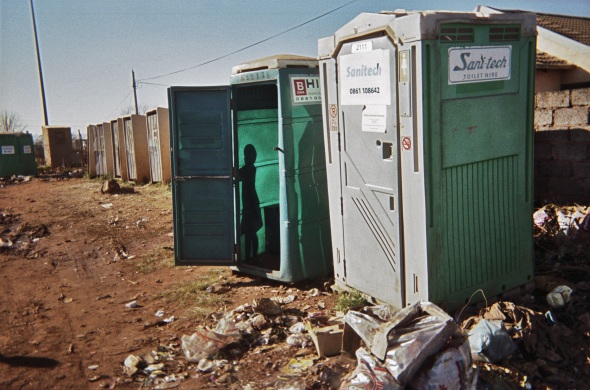Both a cause and a consequence of poverty; disability can seriously impede a person’s right to safely managed water, sanitation and hygiene in a multitude of ways.
Imagine being physically unable to travel to a communal toilet and soiling yourself waiting for help. Imagine being forced to crawl across a make-shift, shared toilet floor or consuming less in order to avoid using facilities outside the home at unsafe hours. Imagine being a caregiver supporting a child suffering with incontinence or a student whose wheelchair just won’t quite fit through the school’s sanitation facilities.
Such scenarios scratch the surface of the daily struggle that the one billion people living with disabilities endure, 80% of whom reside in low-income countries according to the World Health Organisation’s (WHO) World Report on Disability in 2011. Disproportionately disadvantaging the elderly, women and children, disabilities can cripple opportunities in education, employment and social integration within communities, thus perpetuating poverty and inequalities for both those living with disabilities and their care-takers.
Set out to ‘leave no one behind,’ the 17 Sustainable Development Goals (SDGs) hold a deep promise for people with disabilities everywhere, an estimated 15% of the world’s population, according to the WHO 2011 report. This disability-inclusive agenda advocates promoting, protecting and defending the human rights of people with disability. Bold attempts therefore are needed to ensure that the world’s largest minority, who are at risk of being left behind, are included and indeed fast-tracked to fully achieve Agenda 2030.
The few statistics that do report on disability and access to water, sanitation and hygiene (WASH) however, point to a sobering situation: four years into the SDG’s yet fewer than 50% of schools worldwide have toilets accessible to students with limited mobility (Unicef and WHO 2018). The sparsity of these datasets do not lend much optimism to the heralded ‘leave no one behind’ enthusiasm of the SDGs.
Although Unicef has shown that “there are a range of cheap adaptions that can be made from locally available products,” to make WASH facilities accessible and inclusive, the well timed and themed, ‘leave no one behind,’ UN World Water Report, released in March 2019 shows a discontinuity between the SDG commitments and present WASH policies and approaches.
Many national WASH policies have been slow to adopt or account for the “universal design” standards as set out in the UN Convention on the Rights of Persons with Disabilities. Some laws go as far as excluding individuals with disabilities, in turn denying them their right to water and sanitation. Director of Research and Advocacy at the Socio-Economic Rights Institute of South Africa (SERI), Alana Potter, explains where South Africa’s current legislation falls short:
“Current policy and legislation aims to provide sanitation facilities designed for people with disabilities only to specifically identified households. This approach excludes a substantial number of people with disabilities who do not meet the selection criteria or do not have, or cannot afford, the documentation required to verify their disabilities in order to apply.”

With South Africa one of the 50 countries attending the High Level Political Forum (HLPF) this July 2019, Alana urges those due to attend to protect the rights of people with disabilities:
“Everybody, able-bodied or not, needs low maintenance household latrines which can accommodate wheelchairs or caretakers, equipped with handrails and running water; it is essential that South Africa adopt this policy approach, if it aims to meet the SDGs.”
As one of the HLPF’s focuses this year is to review SDG10,‘reducing inequalities and exclusion’, surely progressive action in the area of WASH as a direct result of discussions can be expected, since water and sanitation are an obvious and dignified place to promote empowerment and equality.
Improving WASH access is not however just about changing physical infrastructure, it’s about challenging the stigma and taboos surrounding disability too. Despite these complex challenges, safely managed water remains a human right for everyone. All WASH actors and partners must mainstream and advocate access for people with disabilities in the decision making, design, implementation and review of facilities to ensure that those living with disabilities have the same rights that many others around the world and including those within their own communities already enjoy.
This blog was written for the Water Action Month campaign as part of its weekly themes series, focusing on reducing inequalities in WASH and with special thanks to SERI’s Director of Research and Advocacy, Alana Potter. Watch Alana’s expert interview, considering the challenges of shared latrines in Informal Settlements here.